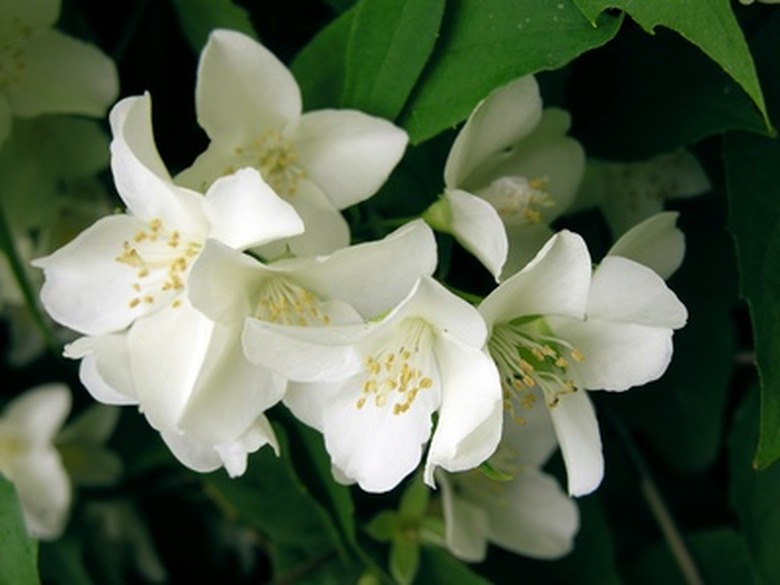India Carnation Plant Care
The India carnation plant (Tabernaemontana divaricata) is a medium-sized, evergreen shrub. Also called the crepe jasmine or butterfly gardenia, this plant is desirable for its ruffled white flowers that give off a strong, pleasing fragrance at night. With proper care, this plant will flower year-round, according to Edward F. Gilman, a horticulturist with the University of Florida.
Climate
Tabernaemontana divaricata is a tropical plant native to the tropics of southeastern Asia and India. As such, this plant can only be grown successfully outdoors in the tropical areas of the United States. The United States Department of Agriculture (USDA) has defined those areas as hardiness growing zones 10B through 11, which includes the far south of Florida, a thin slice of the southern California coast, and Hawaii. While the India carnation plant can be grown in a pot and brought indoors when cool weather threatens, the horizontal growing habits of the branches makes it difficult to contain.
- The India carnation plant (Tabernaemontana divaricata) is a medium-sized, evergreen shrub.
- While the India carnation plant can be grown in a pot and brought indoors when cool weather threatens, the horizontal growing habits of the branches makes it difficult to contain.
Light
The India carnation plant thrives in bright sunlight, but the very hot, direct rays of the tropical sun can sometimes scorch the plant's leaves. For that reason, choose a location for your jasmine that will not expose it to direct sunlight in the afternoon, when the sun's rays are strongest. A southern exposure works well, as does a location where the plant will receive morning sunlight followed by filtered or dappled afternoon shade.
Soil
This hardy shrub will grow in just about any type of soil, according to Mr. Gilman, including alkaline or acidic, clay or sandy, or rich, loamy ground. Still, the India carnation will thrive best in soil that is loose but well-draining. If you have tightly packed garden soil, amend it with peat moss, coarse sand and perlite to add nutrients and help the soil drain successfully.
Water and Fertilizer
This tropical beauty loves a moist, humid environment. Keep the soil continually moist, but not soggy or waterlogged, as too much water can cause the roots of the plant to rot. Warm water is best. While this plant is not a heavy feeder, like all woody shrubs, it can benefit from being fertilized each spring with a balanced (10-10-10), water-soluble fertilizer.
- The India carnation plant thrives in bright sunlight, but the very hot, direct rays of the tropical sun can sometimes scorch the plant's leaves.
- A southern exposure works well, as does a location where the plant will receive morning sunlight followed by filtered or dappled afternoon shade.
Problems
The India carnation plant does not suffer from any serious diseases, according to Mr. Gilman, but it can become infested with scale, mites and other insects. Too much water left standing on the leaves of the plant can lead to sooty mold development. Avoid watering from above, and if you notice an insect infestation, treat the plant with a spray application of insecticide.
